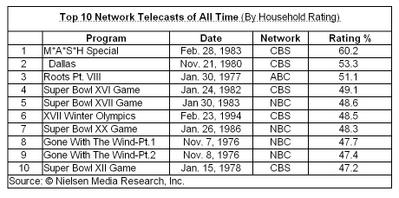There’s been much ink and many bits written about the FCC’s unanimous decision last week largely freeing the
telcos to wholesale their
DSL service on their own terms—including not at all. This puts them on a level playing field with the cable operators, who were ruled to be freed of such wholesale requirements in the recent
Brand X Supreme Court decision.
Those who disagreed with the decision were unusually muted, though still out with their statements. They knew that the outcome was probably inevitable once the Supreme Court had spoken. The non-
telco ISPs were
predictably displeased, but there was no talk of litigation to overturn the ruling at this point.
Earthlink, among the largest resellers of both broadband cable and
DSL, at least publicly was
nonplused, stating , “…We are confident that we will extend our existing commercial agreements with the Bells so that we can continue to deliver
DSL services” and adding, significantly, they will “explore next generation broadband alternatives to give consumers competitive alternatives for their high-speed Internet service.”
The self-styled consumerists were likewise less shrill than I would have expected. (I always call them “self-styled” or “self-appointed” because they rarely seem to be speaking about
my self-interest as a consumer and I suspect their positions are rarely, if ever, favorable to the interests of all consumers. I never appointed them to represent me. Nor perhaps you). Andrew Jay
Schwartzman, the oft quoted President and CEO of the
Media Access Project, a very nice guy with whom I rarely agree on policy, typically lambasted the FCC’s ruling, but added, “Even so, it could have been worse. By asserting its authority to stop the most flagrant kinds of abuse, the FCC has made it somewhat harder to block or impede access to information.”
Indeed,
Schwartzman picked up on a generally
underreported piece of the FCC’s August 5 Report and Order. Concurrent with the ruling they released a
policy statement “New Principles Preserve and Promote the Open and Interconnected Nature of Public Internet,” which states:
(1) consumers are entitled to access the lawful Internet content of their choice; (2) consumers are entitled to run applications and services of their choice, subject to the needs of law enforcement; (3) consumers are entitled to connect their choice of legal devices that do not harm the network; and (4) consumers are entitled to competition among network providers, application and service providers, and content providers.
This addresses the fear expressed by some advocates, as
over reported in a
Wall Street Journal front page piece (subscription required) on Monday, that “Technology has evolved allowing the broadband companies to block Web sites from their customers.” The industry pooh-poohs that scenario, insisting, they won't ever block access to competitors' Web sites because customers wouldn't stand for it. Regulation freaks (and others with a self-interest) are pushing for Congressional legislation for so-called net-neutrality. Some even acknowledge there isn't a problem now, but say there
might be. "The temptation is always there by the owner to favor his own content," the
WSJ quotes Rep. Rick
Boucher, a Virginia Democrat.
A strong response to this paranoia is in a thoughtful piece by David
Berlind, at the
Between the Lines Zdnet blog. After first admitting that his initial impulse was to be concerned about an apparent
telco-cable duopoly in broadband,
Berlind notes:
Recent history is beginning to prove that that technopolies aren't very sustainable and that innovation somehow has a way of breaking them down (although maybe not as rapidly as we'd like). In some ways, trying to keep technopolies at bay through regulation turns out to be a crutch that can only slow innovation down. The innovators are much better off with a less complex labyrinth to deconstruct.
Just recall: In the early 1990s AOL developed what seemed to be an unassailable position as the largest proprietary online service. In 1994 Microsoft launched its competitive
MSN. I was part of an active
Listserv,
On-line News. The preponderance of participants (traditional journalists and new online journalists) agreed that with Microsoft’s hegemony in the PC world that they would quickly overwhelm AOL. Just then the World Wide Web made the Internet an unstoppable force. Despite its near monopoly on the desktop,
MSN never got traction as a proprietary service, quickly converting to a free Web service, plus an
ISP model that AOL quickly adopted. AOL continued to grow, to the point that it could acquire Time Warner. But with the demise of dial-up service, AOL has been losing subscribers by the millions. Its name was removed from the corporate title, which is again Time Warner.
Similarly, innovators are in the labs and in the field with technologies to compete with the
telco and cable guys’ only real competitive barrier—the last mile.
Berlind points out that “one big fat digital
backhaul to your neighborhood and a wireless mesh can take over from there providing voice (
VoIP voice) and data, completely
disintermediating the cable/
DSL guys in the process.” Entrepreneurs can following the lead of
Philadelphia in promoting the build out of city-wide
Wi-
Fi or use
WiMax (though hopefully not as city-owned enterprises). The FCC ruling should give new momentum to the long-running potential of using
electric power lines for the last mile.
Both the
Brand X decision and the FCC’s rule-making on
DSL will likely do more to further broadband competition than a mandatory access ruling ever could have. That would have maintained a cozy two-technology
backend duopoly even if many players were doing the marketing on the front end. These decisions are the right ones to encourage truly new technologies that will lead to real competition. Win-win.
Email this entry Link to this entry
